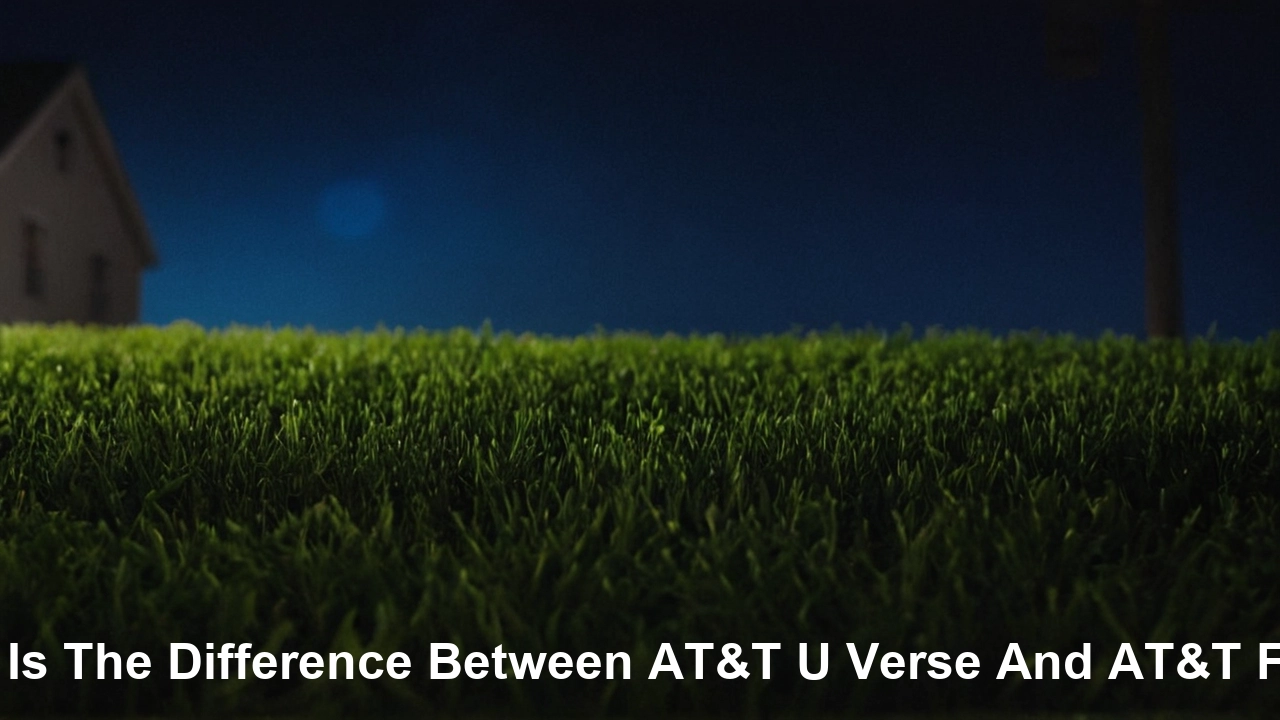What is the difference between AT&T U-verse and AT&T Fiber?

While AT&T U-verse refers to AT&T’s bundle of internet services, AT&T Internet is one of the internet services provided by the company. Although both are competitive solutions offering similar services, customers should be aware that U-verse and Fiber differ in terms of the technology they use, their current operational speeds, access, and costs.
Technology
The most fundamental difference between U-verse and Fiber is the platform they choose to build upon. To provide the internet connection to a customer's house, AT&T's U-verse service depends on fiber optics cable and copper telephone line. Copper phone network penetrates individual homes; fiber optic network reaches many local communities. In a fiber-to-the-node (FTTN) network, copper lines are utilized the rest of the way while the fiber is delivered to a node close to the client premises.
Conversely, AT&T Fiber is a 100% fiber-optic internet service wherein a fiber optic cable connects to a customer's house, therefore forming a fiber-to-the-premises (FTTP) network. This forbids the use of any copper wires. The fiber optics of the cables provide an improved internet connection than those of conventional lines.
Speeds
These differences are the cause of the speeds that U-verse and Fiber can offer to their users. U-verse can only go as high as 45 Mbps for both download and upload speed, which is why that company is using copper wire for the last-mile connection into homes. These are average real-world sustained speeds of U-verse, and not the maximum ones, as is often the case with similar services.
AT&T Fiber benefits from a gigabit fiber optic link offering considerably higher speeds of up to 1 Gbps for downloading and uploading data. This large bandwidth is sufficient to support some of the modern use of the internet such as streaming 4K video and hardcore online gaming that are almost impossible on the U-verse network.
Availability
Some of the issues associated with the deployment of U-verse include the use of existing phone lines which limited its geographic reach due to the fact it was not available in many rural areas. But still, U-verse has been able to spread its coverage as AT&T has laid fibers and brought in upgraded technologies to provide services to tens of millions of customer premises.
However, fiber internet is dependent on all new physical cables and this is why the deployment of AT&T Fiber was more controlled initially. It has targeted large urban centers and cities in particular. However, as AT&T Fiber Internet is still only in the stage of deployment, the intended availability is expected to cover the same or even a larger area than U-verse in the United States.
Pricing
Pricing strategies also do not differ much between AT&T’s two internet offers; however, fiber internet will cost a higher monthly subscription fee compared to the U-verse internet. An initial tier of AT&T Fiber’s service offering that extends up to 300 Mbps download speeds and 300 Mbps uploads begins at $55/month. Lower-tier packages for AT&T U-verse can cost as low as $40-$45/month. The prices for fiber vouchers or bundles that provide faster speeds also increase even more with the packages for faster speeds through fiber.
U-verse and Fiber give an option of bundling with other AT&T services such as TV or wireless to try and give you an overall lower monthly bill. However, if pricing is compared on a standalone basis for internet-only service providers, fiber connections are 15-25% higher. The idea is that the higher performance that you get means that it will cost a little more.
Reliability
- Copper telephone lines are used to establish networks and are considered to be less reliable than fiber-optic internet. Reasons include:
- No signal attenuation over long distances – Fiber uses light to transfer information as opposed to electricity.
- Less influenced by weather and/or temperature – Like copper, fiber does not possess metallic parts that can change their size and cause signal alterations.
- More resistant to signal loss - Fiber optic cables are constructed from glass whilst copper cables are made from conducting metals; thus, fiber cables are less susceptible to signal interference from the outside world.
This makes fiber internet better placed to support customers’ needs for reliable connection and speeds during unfavorable circumstances. Reliability is no weakness for U-verse, but the company might be more likely to switch to the network, causing slow speeds or temporary outages.
Final Recommendation
Where available, AT&T Fiber outperforms U-verse for AT&T’s home broadband users for the overwhelming majority of them based on the gigabit-plus speeds and long-term upgradeability. Despite these shortcomings, U-verse is still quite capable when it comes to adequate internet surfing, streaming of videos in high definition, and similar requirements. The only two probable scenarios under which a household might opt to go for U-verse would be if they are a more frugal lot or if AT&T has not laid fiber optic cables in that region. Fiber will attract businesses who will consider it the best option to use when undertaking their most important operations.
Thus, before AT&T, U-verse was already paving the way in home internet service, although fiber is now the new platinum. Consumers, who demand the fastest Internet speeds, superior service quality, and the most innovative broadband Internet service that a service provider can offer, should choose AT&T Fiber. However, there are some reasons to choose U-verse for more thrifty customers or the one where fiber cannot reach.
Upgrade to faster, more reliable AT&T Fiber Internet today! Call us at +1 844-905-5002 and get connected with speeds that keep you ahead.





